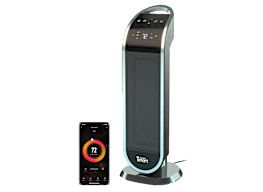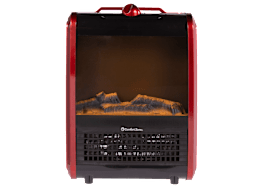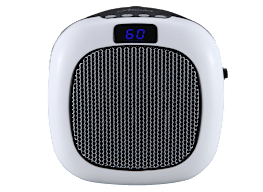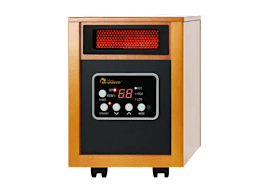How to Be Sure You're Using Your Space Heater Safely
Follow these safety tips if you use a portable space heater. Plus, the safest space heaters from CR's tests.
When you shop through retailer links on our site, we may earn affiliate commissions. 100% of the fees we collect are used to support our nonprofit mission. Learn more.

Space heaters can provide extra warmth in a drafty room or chilly home office. But they can also pose a safety risk—no matter where you use them. Portable space heaters are responsible for 1,700 house fires a year, on average, according to the Consumer Product Safety Commission. Fires started by portable space heaters result in about 80 deaths annually.
If you rely on a portable heater for supplemental heat, it’s important to make space heater safety a priority. Following are tips for safe space-heater operation, along with safety features to look for when choosing a space heater. We also recommend two models with top-notch safety scores from our space heater ratings.
Using a Space Heater: Safety Tips
Half of all home heating fires happen during the months of December, January, and February—they’re mostly caused when a heater (typically an electric one) is placed too close to curtains, bedding, or upholstered furniture. Our experts, as well as the pros at the Association of Home Appliance Manufacturers and the National Fire Protection Agency offer the following safety tips:
- Place the heater on a hard, level, and nonflammable surface. These appliances are intended to sit on the floor, not on a table.
- Establish a 3-foot kid- and pet-free zone around the heater, and never put a space heater in a child’s room.
- Keep the space heater at least 3 feet away from combustible materials, such as furniture, bedding, and curtains. A taller heater may need to be even further away.
- Don’t use a heater in a workshop or garage near paint, gas cans, or matches.
- Turn it off when you leave the room or go to bed.
- Unplug the heater when it’s not in use by pulling the plug straight from the outlet. Check the cord for damage periodically, and don’t use the heater if the cord is frayed or worn.
- Don’t plug another electrical device or an extension cord into the same outlet as a heater—that can cause overheating.
- Install working smoke alarms on every level of your home and in every bedroom, and test them monthly.
Space Heater Safety Features
Certification: Make sure the heater you buy carries a safety certification label from an independent testing organization, such as the UL mark, the ETL label from Intertek, or certification from CSA International.
Shutoff features: A smart sensor that automatically shuts off a heater when it overheats is a must. You’ll also want a tip-over switch that does the same if the heater is knocked over.
A ground-fault circuit interrupter (GFCI) plug: Most space heaters don’t come equipped with a GFCI plug, which prevents electric shock. Heaters without one should not be used around water, manufacturers advise.
A sturdy cord: Most space heaters come with a cord that’s 6 feet long. To prevent overheating, never use an extension cord or a power strip with an electric heater.
Safest Space Heaters From CR's Tests
In our most recent tests, 49 models got high marks for fire safety; very few, however, rated Good or better on our hot-surface test. The two space heaters below earn Excellent or Very Good ratings in both our fire safety and hot-surface tests, and also have tip-over switches that automatically shut the appliance off if it gets knocked over.




























